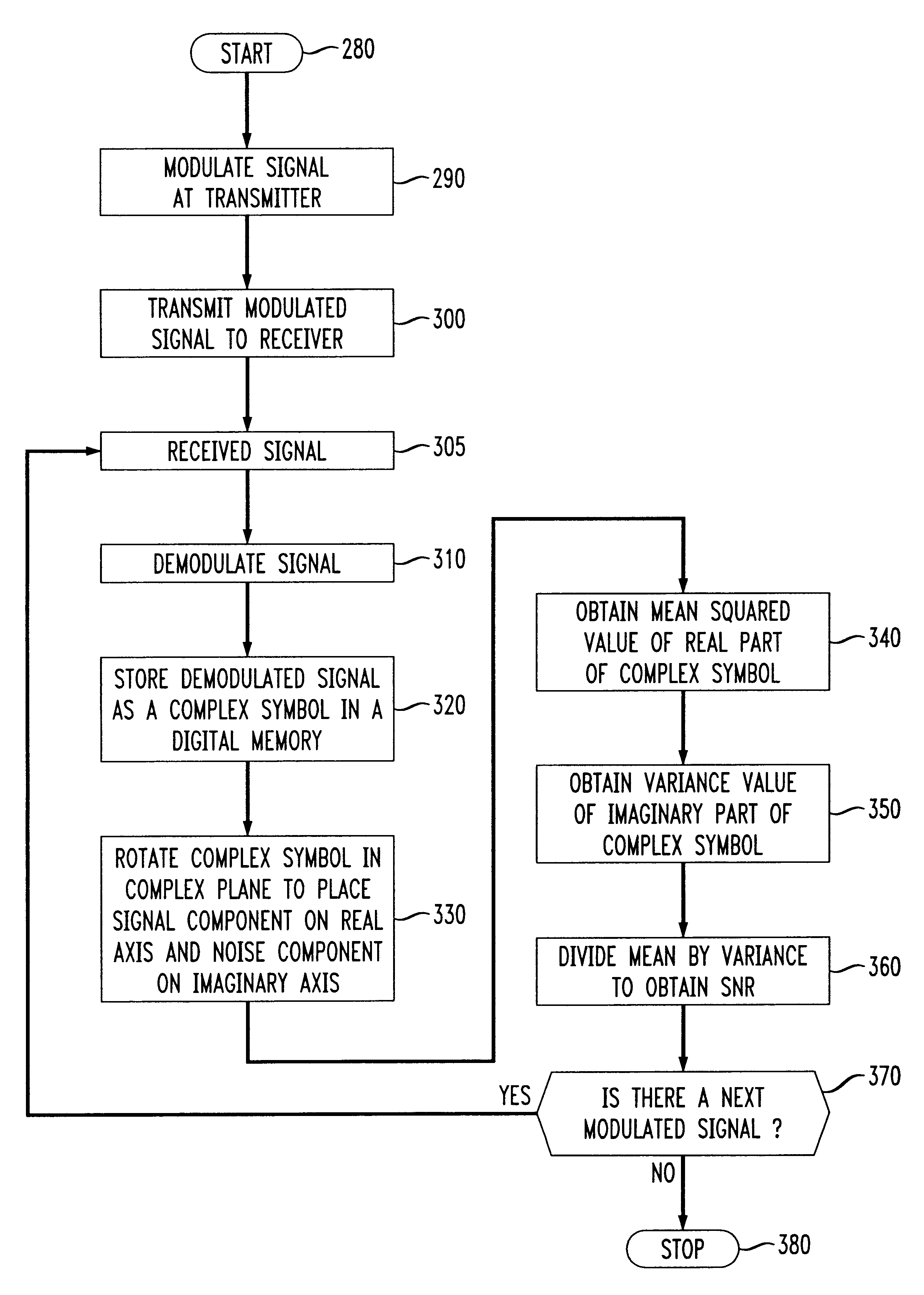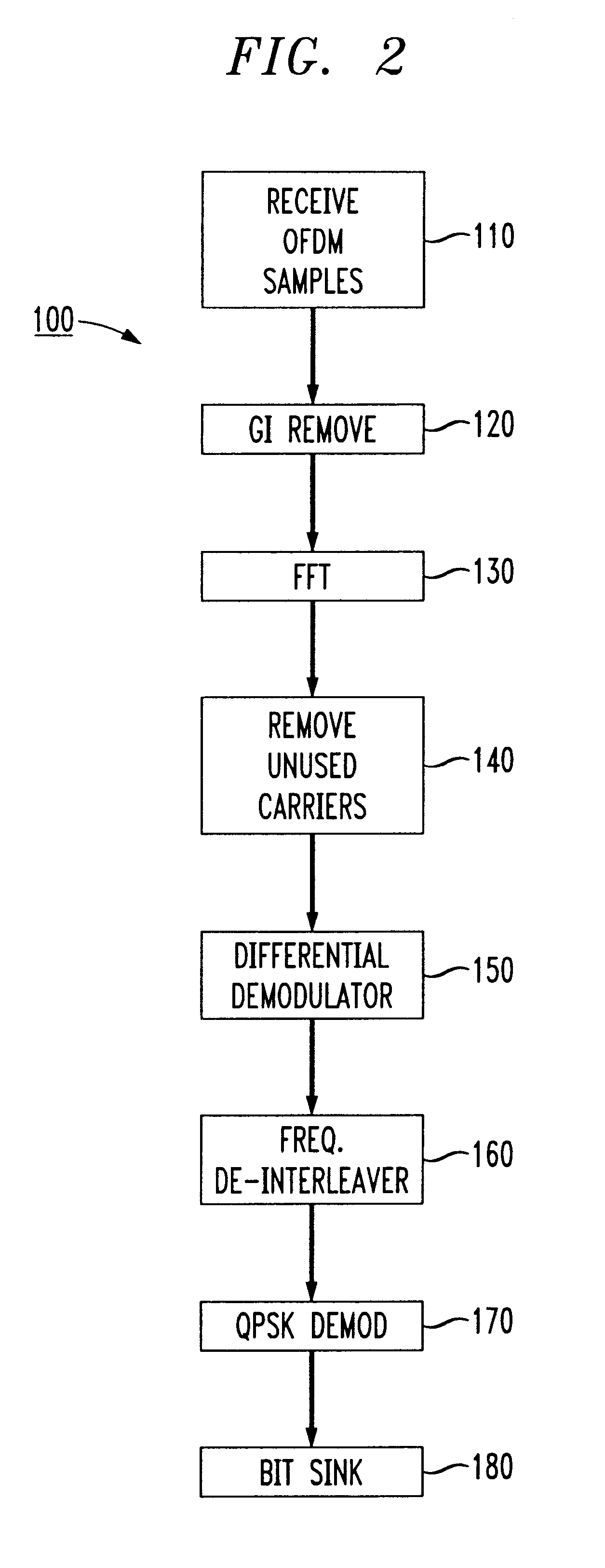Methods of estimating signal-to-noise ratios
a signal and signal-to-noise ratio technology, applied in the field of signal-to-noise ratio estimation methods, can solve the problems of reducing the information transmission capability of the system, reducing so as to achieve the effect of simplifying the computation, and improving the accuracy of the signal
- Summary
- Abstract
- Description
- Claims
- Application Information
AI Technical Summary
Problems solved by technology
Method used
Image
Examples
Embodiment Construction
FIG. 1 depicts, by way of preferred and illustrative example, a transmitter 10 in an OFDM system. OFDM systems are designed to transmit a large number of substantially parallel sub-carriers. When the sub-carriers are transmitted, an OFDM symbol or "frame" is created that contains many modulated sub-carriers but, since the sub-carriers are transmitted substantially in parallel, inter-symbol-interference is minimized by making the signaling interval much larger than the channel delay spread. A well-known method for generating the OFDM frame is through use of an inverse fast Fourier transform (IFFT) which encodes the information, although it will be appreciated by those skilled in the art that other encoding schemes are readily usable in the methods of the present invention. Other digital encoding methods may also be employed in accordance with the inventive methods to perform SNR estimation or calculation. While OFDM systems are designed to have a large number of sub-carriers within e...
PUM
 Login to View More
Login to View More Abstract
Description
Claims
Application Information
 Login to View More
Login to View More - R&D
- Intellectual Property
- Life Sciences
- Materials
- Tech Scout
- Unparalleled Data Quality
- Higher Quality Content
- 60% Fewer Hallucinations
Browse by: Latest US Patents, China's latest patents, Technical Efficacy Thesaurus, Application Domain, Technology Topic, Popular Technical Reports.
© 2025 PatSnap. All rights reserved.Legal|Privacy policy|Modern Slavery Act Transparency Statement|Sitemap|About US| Contact US: help@patsnap.com



